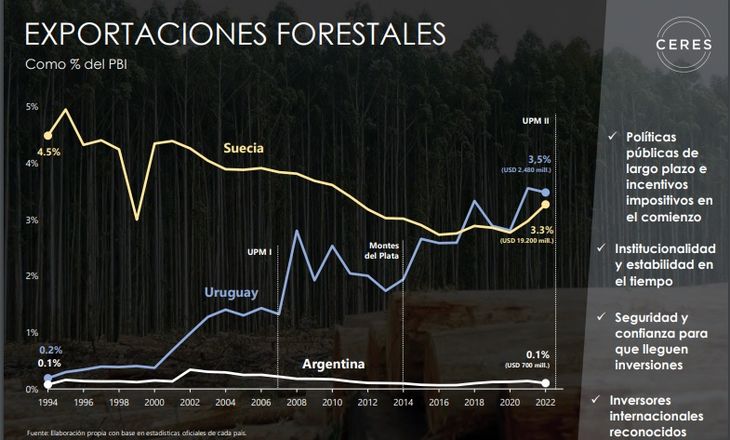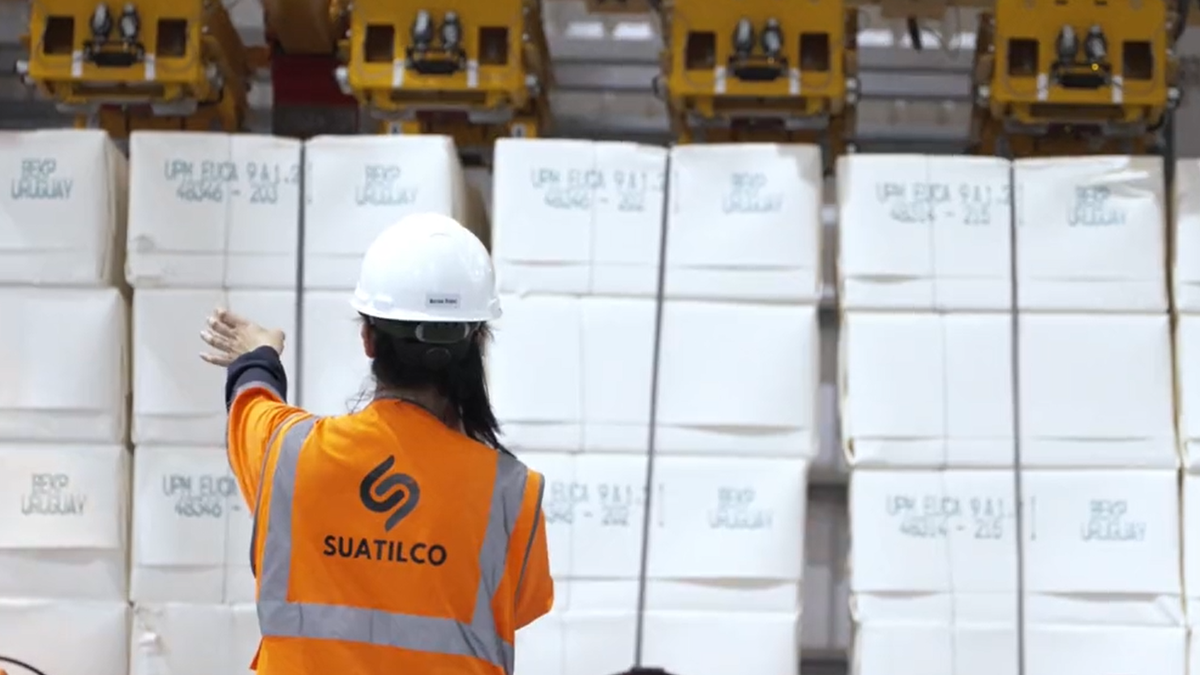To reach this level of incidence, it will be key for UPM 2 to reach its productive potential, highlighted a Ceres study.
The exports of the forestry complex are shaping up to be the sector with the greatest impact for the country next year, hand in hand with the sales of cellulose and as the second floor of UPM reach its productive potential, according to the estimates provided in a study by the Center for Studies of Economic and Social Reality (Ceres).
The content you want to access is exclusive to subscribers.
The growth of the sector was sustained, to the point that it went from generating sales of 315 million dollars in 2007, representing 7% of the total, to export for 1,224 million dollars in 2014 (12% of the total). If you look at last year’s data, placements increased again and were for 2,479 million dollars (19%).


This emerges from the special report of Ceres, presented within the framework of the Forest Breakfast 2023. There the president of the center spoke, Ignacio Munyo, who also anticipated that “in Uruguay There are nearly 100 thousand hectares certified”, so he predicted that “in the future, the local market will generate 32 million dollars in carbon credits.”
The study specified that “the forestry sector will be the country’s largest exporter in 2024, once the second pulp mill in UPM reaches its productive potential”, after being put into operation this year.
exporceres.jpg

The economic impact and jobs
When analyzing the impact of the sector on the economy, the Ceres report pointed out that for every dollar exported in solid wood “the impact on the GDP more than doubles” and almost doubles in terms of cellulose.
Along these lines, it appears that solid wood is the subsector with the greatest indirect impact on the Uruguayan economy and pulp has a greater indirect impact than the national average, while the forestry activity as an investment generator.
Along these lines, the president of the Society of Forestry Producers, Lucia Basso, He maintained that the sector “has a total of 30 thousand jobs, including direct, indirect and induced jobs.”
In turn, the report highlighted that the proportion of workers with a very high probability of automation in the total economy is 27%, while for workers in the forestry sector it is 13%.
“It is more necessary to have skills related to the perception and manipulation of materials, but it is more intensive in manual tasks, so it is important to monitor the situation,” he said about the possibility of permanent training in various public and private institutions.
Source: Ambito




